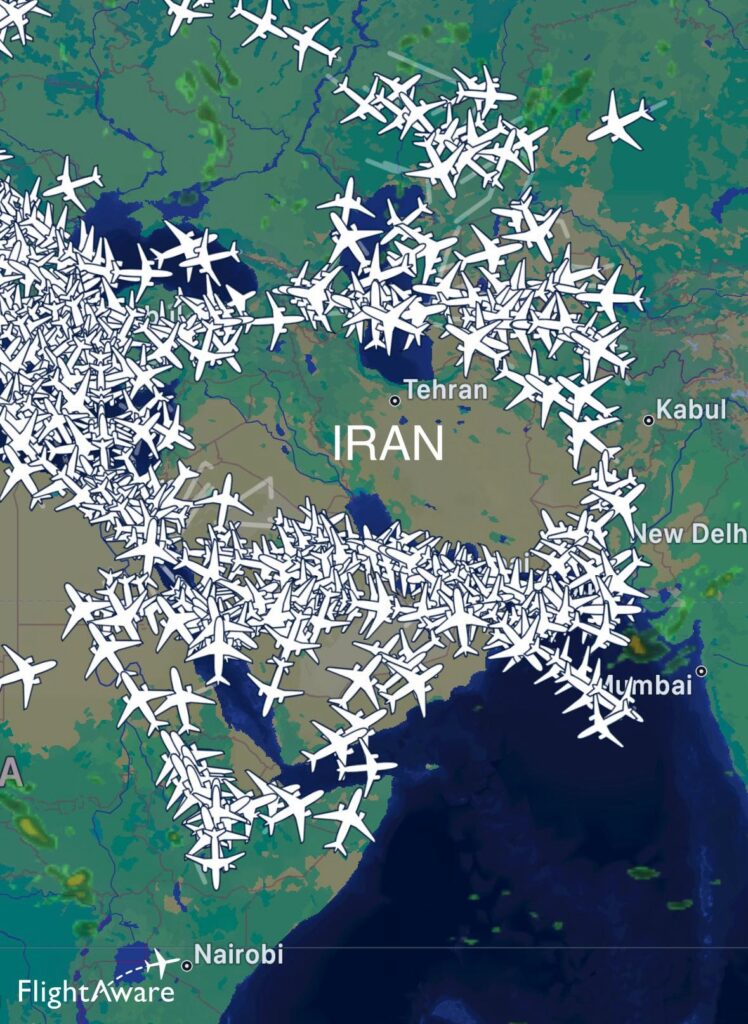
Safety Concerns Amid Open Conflict
Recent escalations between Israel and Iran—marked by missile exchanges—have led to major airspace closures across the region. Israel, Iran, Iraq, and Syria have all restricted or shut off civil aviation corridors due to serious risks of misidentification or air defense fire .
Region-Wide Rerouting
Major carriers including British Airways, Lufthansa, Emirates, Qatar Airways, Air India, and Singapore Airlines have rerouted flights over wider corridors via Saudi Arabia, Egypt, Turkey, and Central Asia . Flights from Dhaka to Europe by Biman are also avoiding Iranian and Iraqi routes .
Longer Flights, Higher Costs
Bypassing Iran adds hours to standard routes—some flights extend by up to eight hours—while burning more fuel and complicating crew-time limits. These increased operational costs are often passed on as higher ticket prices .
Regulatory Blacklists
The FAA and EASA have issued warnings and restrictions covering parts of Iran, Iraq, and surrounding airspace, citing misidentification dangers and rising military activity .
Evacuations & Cargo Disruptions
Though evacuations via alternate routes are ongoing, regular commercial flights remain disrupted. Cargo planes rerouted or paused operations too, including reports of missing Chinese flights near Iran .
🌍 What This Means for Travelers
• Longer travel time & more fatigue due to indirect routing.
• Higher airfares, thanks to increased fuel and crew costs.
• Refundable delays/cancellations—travel insurance may not cover voluntarily altered flights .
• Potential congestion over alternate air corridors, leading to flight delays and air traffic controller pressure
🛫 Bottom Line
With tensions still high and airspace at risk, airlines are treating Iranian airspace as a no-fly zone. While rerouting ensures passenger safety, it inflates costs, time, and complexity. This disruption could persist until regional tensions ease or airspace is officially reopened




